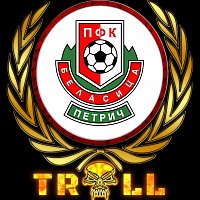![]() Publicado en Ukraine - Entretenimiento y Ocio - 14 Jun 2016 16:18 - 31
Publicado en Ukraine - Entretenimiento y Ocio - 14 Jun 2016 16:18 - 31

originally published in 1981, is an illustrated encyclopedia of an imaginary world, created by the Italian artist, architect, and industrial designer Luigi Serafini during thirty months, from 1976 to 1978.The book is approximately 360 pages long (depending on edition), and written in a cipher alphabet in an imaginary language.

Originally published in Italy, the book has since been released in several countries.
The book is an encyclopedia in manuscript with copious hand-drawn, colored-pencil illustrations of bizarre and fantastical flora, fauna, anatomies, fashions, and foods.It has been compared to the Voynich manuscript,"Tlön, Uqbar, Orbis Tertius",and the works of M.C. Escher and Hieronymus Bosch.
The illustrations are often surreal parodies of things in the real world: bleeding fruit; a plant that grows into roughly the shape of a chair and is subsequently made into one; a lovemaking couple that metamorphoses into an alligator; etc.

Others depict odd, apparently senseless machines, often with a delicate appearance, kept together by filaments. There are also illustrations readily recognizable as maps or human faces. On the other hand, especially in the "physics" chapter, many images look almost completely abstract. Practically all figures are brightly coloured and rich in detail.

Writing system
The writing system (possibly a false writing system) appears modeled on ordinary Western-style writing systems (left-to-right writing in rows; an alphabet with uppercase and lowercase letters, some of which double as numerals). Some letters appear only at the beginning or at the end of words, a feature shared with Semitic writing systems. The curvilinear letters of the alphabet are rope- or thread-like, displaying loops and even knots, and are somewhat reminiscent of Sinhala alphabets.

The language of the book has defied complete analysis by linguists for decades. The number system used for numbering the pages, however, has been cracked (apparently independently) by Allan C. Wechsler and Bulgarian linguist Ivan Derzhanski, among others. It is a variation of base 21.
In a talk at the Oxford University Society of Bibliophiles held on 11 May 2009, Serafini stated that there is no meaning hidden behind the script of the Codex, which is asemic; that his own experience in writing it was closely similar to automatic writing; and that what he wanted his alphabet to convey to the reader is the sensation that children feel in front of books they cannot yet understand, although they see that their writing does make sense for grown-ups.
Endosar
Comentarios (31)

comment

o.O

vs

https://www.erevollution.com/es/article/9305

nice

???


























